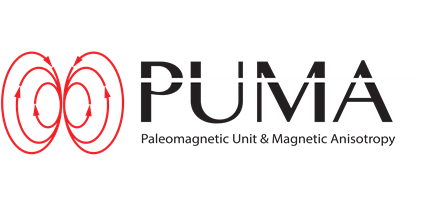
The Paleomagnetic Unit and Magnetic Anisotropy (PUMA) lab has been refurbished in 2017 and is now equipped with a new set of instruments for palaeomagnetic and magnetic fabric analysis.
The lab is currently managed by Carl Stevenson and Marco Maffione and is open to all staff members and students of the University of Birmingham, as well as to external visitors and people form industry.
The lab is currently equipped with the following instruments:
KLY-4S kappabridge and CS-3 apparatus (AGICO)
Our KLY-4S kappabridge is used for analysing the anisotropy of magnetic susceptibility (AMS) of rock specimens. This technique is commonly used to study subtle rock fabrics that are too weak or ambiguous to detect using other conventional methods. This induction bridge operates at variable fields between 50 and 450 A/m and a frequency of 875 Hz and can measure the AMS using both automatic (with rotator) and manual mode.
Together with the attached CS-3 apparatus, the KLY-4S can measure the variation of the magnetic susceptibility at high temperatures (20-700°C) in argon gas atmosphere, and at low temperatures (-196°C) with the CS-L cryostat using liquid nitrogen. Thermomagnetic curves can be used to identify the blocking temperatures of dominant magnetic mineral phases that contribute to the bulk susceptibility or magnetization.
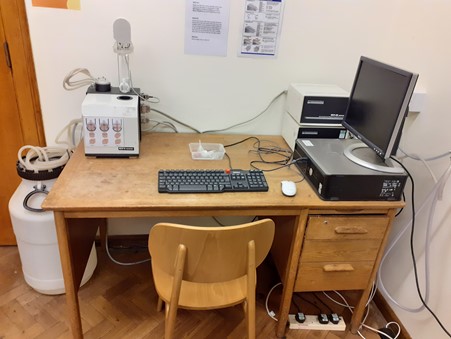
JR-5A spinner magnetometer (AGICO)
Our JR-5 spinner magnetometer is used in palaeomagnetic studies to measure the remanent magnetization of discrete rock samples by rotating them at high speed (97 rpm) within a nearly zero field environment. It can operate in both manual and automatic mode and is suitable to measure both cylindrical and cubic samples. The JR-5 is able to cover a wide range of remanence intensity making it ideal to study extremely magnetic volcanic rocks.
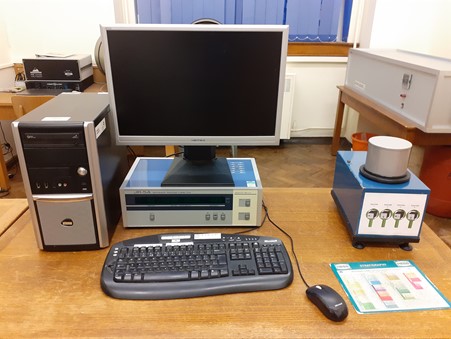
LDA5 demagnetiser (AGICO)
Our LDA5 demagnetiser is used to demagnetise discrete rock samples with a variable alternating field (AF) up to 200 mT. The LDA5 can perform either tumbling or static (3 axes) demagnetizations.
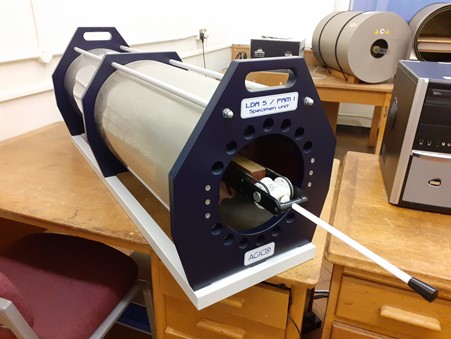
D-2000 demagnetizer & magnetizer (ASC Scientific)
Our D-2000 is used to (i) demagnetizing up to 5-6 discrete samples simultaneously using alternating field of up to 100 mT, and (ii) imparting anhysteretic remanent magnetizations (ARM) and partial anhysteretic remanent magnetizations (pARM).
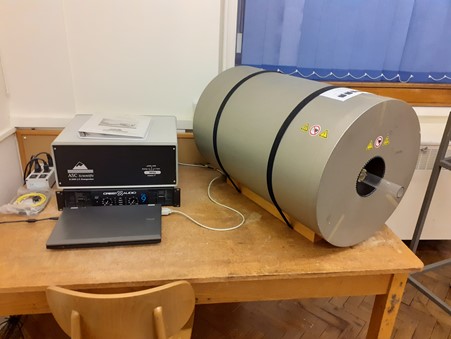
MMTD-80 shielded oven (Magnetic Measurements Ltd)
Our MMTD80 oven is able to demagnetise up to 80 samples simultaneously under temperature up to 700°C. It has a magnetic shield body that allows to reduce the magnetic field in the oven down to few nano Teslas (nT).
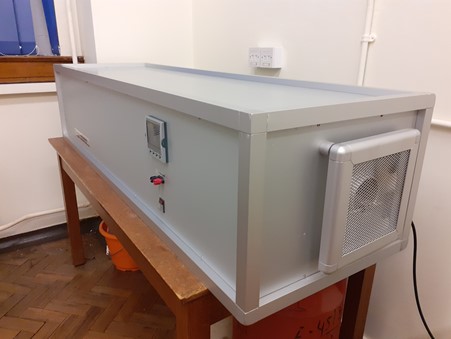
IM-10 Impulse Magnetizer (ASC Scientific)
Our IM-30 Impulse Magnetizer is used to impart an Isothermal Remanent Magnetization (IRM) in rock samples, which enables a variety of rocks magnetic studies to define the nature of the magnetic carriers. This model can apply maximum fields between 0.03 and 1.1 Tesla (T).
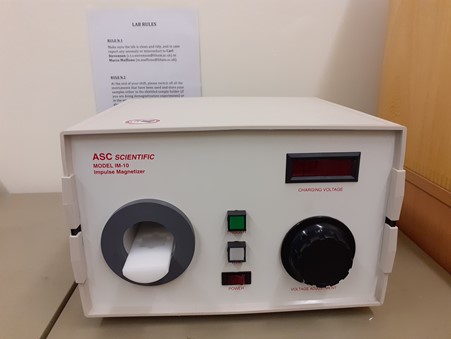
Palaeomagnetic field kit
- Stihl portable rock drill
- Pomeroy orienting tool for magnetic and sun compasses
- Field portable magnetic susceptimeter
Enquiries
Questions, queries, or requests for using the facilities of the PUMA lab should be addressed to Marco Maffione (m.maffione@bham.ac.uk) or Carl Stevenson (c.t.stevenson@bham.ac.uk).